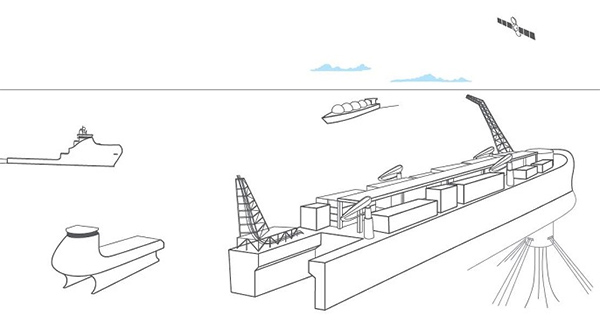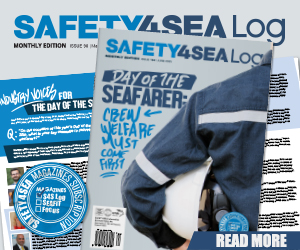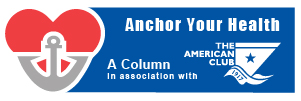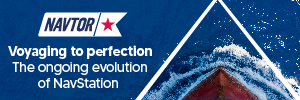Bjørn Kjærand Haugland, EVP & Chief Sustainability Officer DNV GL, says that autonomous shipping is a now a reality. Vessels are already equipped with technology to see at night and through fog and snow – better than the human eye, and more ships are fitted with systems to manage and transmit large volumes of data. The technology is in place and the time has come to move more operations ashore. Instead of having a crew of 15 sailing in a storm in the North Sea, people can stay in a control room on shore, where the same person could monitor and steer many ships.
Get ready for shipping 4.0
More autonomous shipping has the potential to bring benefits to the industry, their customers and to the society at large. As ships become more connected the below 10 main drivers will in my opinion gradually transform the shipping industry towards new business models based on more remote control, more autonomy and reduced requirements to on-board manning.
- Increased safety: Human error is a significant part of 70% to 80% of all accidents at sea. Replacing human control with reliable technology has the potential to increase safety radically.
- Reduced operational cost: Unmanned or partly unmanned shipping brings along a significant potential to reduce cost. Manning costs typically represent more than 30 % of the total ship operation costs and around 10% of the average trip rates
- Reduced construction costs: No superstructure, accommodation and deckhouses will reduce the construction costs (no air conditioning, heating, ventilation, etc.) Many facilities and systems on board are only there to ensure that the crew is kept fed, safe, and comfortable. To eliminate or reduce the need for on-board crew will radically simplify vessels design and reducing construction and maintenance costs.
- Increased environmental sustainability: Slow steaming is maybe the most obvious approach to achieve this objective. By diminishing the fuel consumption of a vessel its emissions are reduced equally. Hence the effects of unmanned autonomous vessels on a wider deployment of slow steaming will not only contribute towards economic but also significantly towards the environmental sustainability of maritime transport. Slower sailing speeds become economically viable if crew costs can be reduced.
- Increased social sustainability: Seagoing professions are increasingly perceived as unattractive today. Sea passages are long and often lacking in variety. Port calls that might offer some change to the daily routine are short nowadays allowing for little time to spend ashore. Mariners are confronted with a disconnection from their social environment due to the long-time periods they spend away from family and friends. The concept of unmanned autonomous vessels offers an opportunity for improvement by increasing the attractiveness of seafaring. The seafarers of the future control and monitor the routing and navigation of the unmanned ship from a shore side operations centre, plan the vessel’s maintenance schedule or could even pilot the ship during the approach of a port. At the same time, they can live close to their families and follow ordinary working hours.
- Stronger competence base: As the operations, tasks and jobs gradually move from sea to shore the competence requirements will develop and attract talents with new complementary competencies that will strenghten the shipping industry.
- Increased competitiveness: Smarter ships with increased cargo capacity (no superstructure & deckhouses) and reduced operational cost will make the shipping industry more competitive towards other modes of transportation. E.g. there are a potential to increase the trade volumes by moving cargo from shore to sea and reduce the density of polluting cargo trucks on the roads.
- Reduced risk of piracy: There would be no human hostage situation from piracy and a remote-controlled ship can be “shut down” from shore making it difficult for pirates to take over the control of the vessel (they must bring their own tug to take control).
- Opening of new opportunities and solutions: A ship design without superstructure, deckhouses and equipment to facilitate an on-board crew will have more space for cargo and open for new solutions for automatic loading and unloading. Other examples of new opportunities can be where small unmanned vessels can replace the need of more expensive city infrastructure like bridges etc.
- New Business models: Going forward we will see business model innovation through the entire value chain of shipping on top of a more advanced and connected ship technology platform. It was for example newly reported that Marine Transport International Ltd., a U.K.-based freight forwarder, has started using blockchain technology to create real-time digital ledgers of shipping data for use by port officials, cargo owners and others along global supply chains. In 2014, Maersk began installing 3-D printers on their ships in-order to explore and test on-board and printing of spare parts.The U.S. Navy is examining new possibilities for autonomy in future naval missions, putting autonomous unmanned vessels to the test in a recent demonstration in the lower Chesapeake Bay.
The ReVolt is a prototype of DNV GL’s vision for the future of coastal cargo shipping. It is intended to serve as an inspiration for equipment manufacturers, shipyards and ship-owners as they endeavour to develop new solutions for a safer and more sustainable future. With no crew, there is no need for crew facilities and the resulting increase in loading capacity and low operating and maintenance costs. Compared to a diesel-run ship, the ReVolt could save up to USD 34 million during its estimated 30-year lifetime – saving more than a million USD annually.
The Road Ahead
The road towards connected autonomous shipping will be stepwise and start with small specialized cargo vessels for costal and local traffic. There are many levels of autonomy and we will gradually see more automation for all vessels as technology matures. Different levels of autonomy will gradually expand to increasingly wider operational area and larger ships. The regulatory and legal frameworks will need to be developed to facilitate a safe and responsible uptake of new technology and solutions.
Unmanned shipping has a huge potential to drive economic, environmental and social sustainability in the shipping industry and I am happy to see a lot of exiting development taking place in the industry these days.
The Norwegian Shipping industry is actively pushing the agenda forward and the Norwegian Maritime Authority and the Norwegian Coastal Administration have recently signed an agreement to open the world’s first test area for autonomous ships in the Trondheim fjord. The Norwegian Forum for Autonomous Ships (NFAS), bring together and share information to organizations interested in the subject of autonomous ships.
By Bjørn Kjærand Haugland, EVP & Chief Sustainability Officer, DNV GL
The views presented hereabove are only those of the author and not necessarily those of SAFETY4SEA and are for information sharing and discussion purposes only.
[divider]
 Bjørn Kjærand Haugland has 20 years of working experience, including management, international marketing and engineering work. His experience includes: Chief Operating Officer & member of DNV Executive Council; Regional Manager & Country Chair ; Regional Operational Manager; Department Management; Section Management; Project Management; R&D and Product Development; Strategy work; Major ICT development project ; Consulting; Surveys; International marketing and marketing intelligence; Customer management; 2 years Expatriate contract in South Korea and 4 years expatriate assignment in China; Risk, hydrodynamic and structural strength evaluations of ships and offshore structures. He currently holds the position of the EVP & Chief Sustainability Officer at DNV GL.
Bjørn Kjærand Haugland has 20 years of working experience, including management, international marketing and engineering work. His experience includes: Chief Operating Officer & member of DNV Executive Council; Regional Manager & Country Chair ; Regional Operational Manager; Department Management; Section Management; Project Management; R&D and Product Development; Strategy work; Major ICT development project ; Consulting; Surveys; International marketing and marketing intelligence; Customer management; 2 years Expatriate contract in South Korea and 4 years expatriate assignment in China; Risk, hydrodynamic and structural strength evaluations of ships and offshore structures. He currently holds the position of the EVP & Chief Sustainability Officer at DNV GL.































































